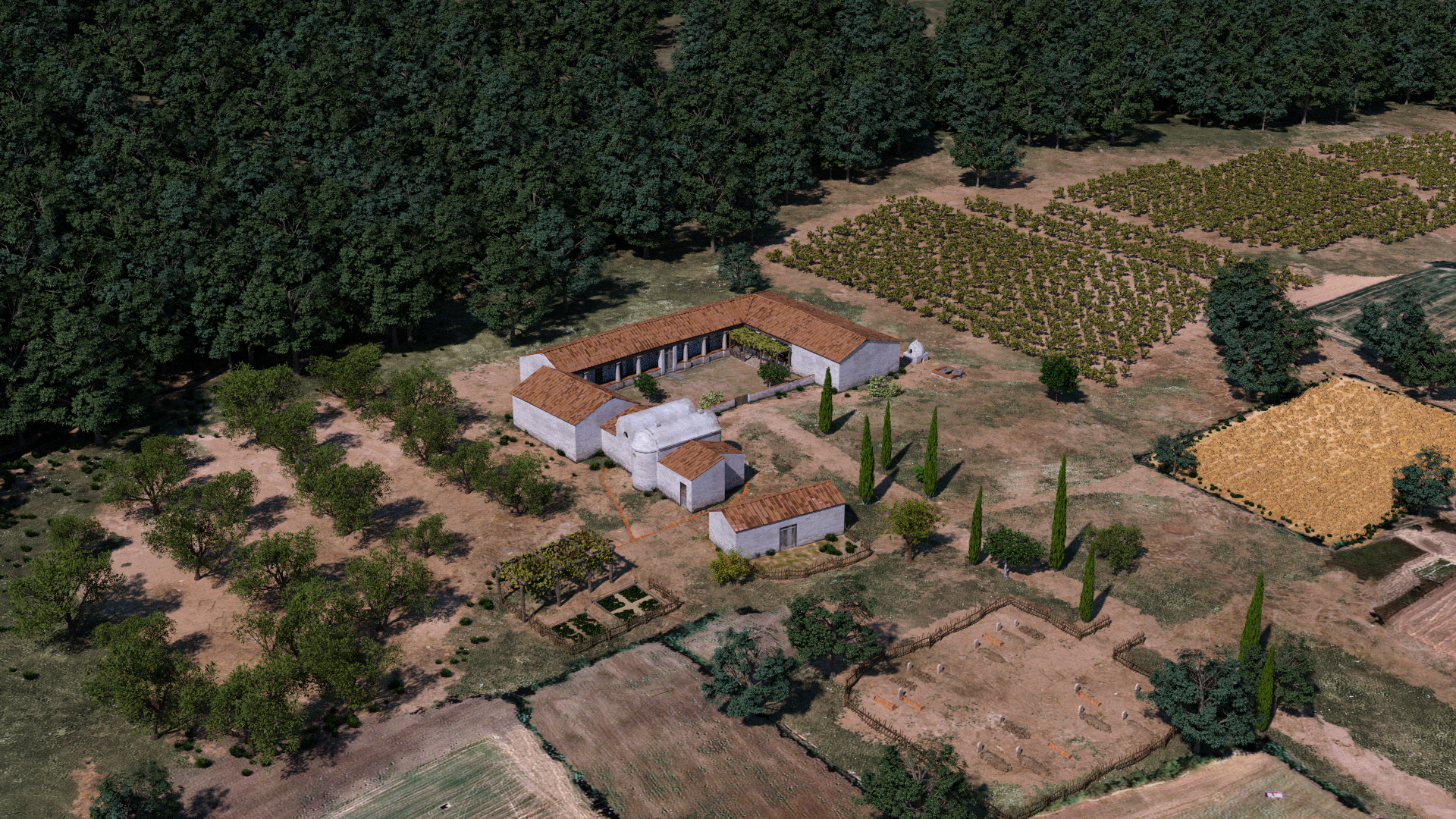
A journey into the past: giving life to the livestock of the Roman villa of Vilauba
Animal husbandry was an essential economic activity in antiquity, as Varro stated in his book “Res Rustica”. However, very little is known about how Romans bred, fed or herded the animals due to the difficulty of studying these topics through a common archaeological record, even though they are key elements for a livestock exploitation.
At last, we are now able to address these fundamental research questions, thanks to the discovery of a unique and extraordinary assemblage at the Roman villa of Vilauba (Girona), composed by 14 cattle carcasses.
With this project, we propose to make a trip to the past to look at the eyes of these cattle by reconstructing their living conditions and rebuilding their appearance.
To achieve this, we will apply an innovative methodological approach focused on biogeochemical analyses (palaeogenetics, microwear and isotopes) and state-of-the-art digital techniques (photogrammetry, digital modelling and rendering). These techniques, rarely used for the study of antiquity, will allow a first-ever analysis of the feeding habits, lambing periods and mobility of these animals, as well as its gender, coat colours, statures and morphology, among other characteristics.
With this first order information and revolutionary materials, we will able to not only make a crucial step forward on our knowledge of Roman animal husbandry at an international level, but also allow us to transfer this knowledge to society with a rigorous, instructional and engaging approach.
The archaeological site of Vilauba is already an international benchmark for the study of Roman rural settlement patterns. This project will amplify its noteworthy impact to the study of Roman livestock.

Period
From the 2nd-1st centuries BC to the 7th-8th centuries AD
Institution
Catalan Institute of Classical Archaeology
Web and social networks
https://twitter.com/ICAC_cat
https://twitter.com/GIAP_ICAC
https://www.instagram.com/icac_cat/
(https://www.museusdebanyoles.cat) (https://cultura.banyoles.cat)
(http://www.arqueoxarxa.cat) (https://visitmuseum.gencat.cat
Principal Investigators
Dr. Lídia Colominas Barberà
Dr. Pere Castanyer Masoliver
Catalan Institute of Classical Archaeology
Location
The villa of Vilauba, Banyoles, Girona, Spain
LOCATION
RESULTS
The results obtained from the archaeozoological study of the 1058 bones recovered in anomaly A of the Vilauba site suggest that the bone assemblage presented here is a homogeneous deposit formed in a short period of time. Furthermore, the presence of several articulated partial skeletons documented during and after excavation in all layers and areas of the deposit suggests that the context in which they were found is a primary deposit. .
The study of the age at death of the animals represented shows that all the cattle were adults when they died, with a predominance of individuals between 6 and 8 years old, except for one individual who was between 2 and 3 years old and two individuals who were between 8 and 10 years old. These ages at death are similar to the slaughter patterns documented during the early Roman of the village in other contexts, with a clear predominance of animals slaughtered at adult and senile ages.
We have also been able to document that these carcasses were thrown into the pit after being processed, as evidenced by the fact that a fairly high number of cut marks have been recorded on the bones. Study of the type of mark and their location and orientation has revealed that, once slaughtered, the individuals were probably eviscerated, partially dismembered and skinned. All this, however, was carried out without fracturing the bones. Therefore, we propose that the corpses were processed in a short time, but not in the usual manner documented in other assemblages excavated in the villa, interpreted as waste from culinary preparation and consumption, nor as was customary in Roman times. Whatever the specific event that led to the formation of this assemblage, the information we have so far inclines us to propose that it was a specific event triggered by exceptional circumstances that led to an unusual use of these corpses. It was the excavation of an area outside the village, a circumstance that very rarely occurs, that has allowed us to open this window to a very specific and exceptional moment in the life of the inhabitants of Vilauba.
Now, with this project, we want to bring these animals to life.
FOTOS
VIDEO
- Bite marks confirm gladiators fought lions at York (Heritage Daily 23/04/2025) - 24 April, 2025
- Ancient DNA challenges long-held assumptions about the Mediterranean Phoenician-Punic civilization (Phys.org 23/04/2025) - 24 April, 2025
- Neolithic agricultural revolution linked to climate-driven wildfires and soil erosion (Phys.org 22/04/2025) - 23 April, 2025























